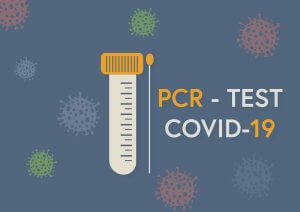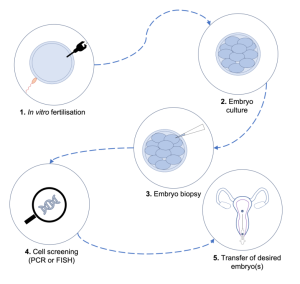Overview
Haematocrit (Hct) is a test that measures the proportion of red blood cells in a given volume of blood. Red blood cells are responsible for carrying oxygen to all tissues throughout your body. The proportion of red blood cells are a key indicator of your health. It is imperative to have a healthy amount of red blood cells in your body. Having too much or too few red blood cells can indicate a serious underlying health issue. The haematocrit test is also known as the Packed Cell Volume (PCV) test and is a relatively simple blood test. In this article, we will learn some basic details about one of the routine blood tests – haematocrit (Hct).

Indications
A haematocrit test is included in what is called a complete blood count or CBC. It is done in the situation where it is suspected that you may anaemia or polycythaemia, which refers to either too little or too much red blood cell count, respectively. Indications of a test refer to the grounds on which a test might be ordered to diagnose a condition. Your provider may refer to you to get a CBC if you have the following symptoms or complaints:
- Fatigue – you would tireless despite having a good sleep
- Headaches and other body aches
- Pale discolouration of skin and conjunctiva
- Low levels of concentration
- Heavy menstrual flow
- Poor nutrition
- Excessive diarrhea
- Bloody stools
- Chronic conditions – these can include kidney diseases and inflammatory disorders like cancer
Risks of Procedure
A haematocrit test is a relatively risk-free test. It involves needlework to draw blood and the small puncture wound closes very soon after. However, in the case of some individuals who have blood clotting diseases like haemophilia, drawing out of blood may cause the wound to take an extended amount of time to close up. Therefore, causing a relatively long recovery.
Very rarely there can be a formation of hematoma or blood clot at the site of the needle insertion. This is mostly a safe complication and can be resolved.
Patient Preparation
A haematocrit test is a rather simple test. There is no long process for you to go through in order for the phlebotomist to draw blood.
Procedure
A blood sample is usually drawn from a part of the body where a vein can be easily accessed. An ideal location that most phlebotomist use is the inside of the elbow on your arm. On some occasions, it is a bit difficult to locate the vein. In this case, the phlebotomist then ties an elastic band on the top of your arm. The causes the blood flow to some extent stop and blood accumulates in the veins in the cubital fossa (crook- in front of your elbow) of your arm. This makes the veins more noticeable so that your phlebotomist can draw blood more accurately. Before pricking your arm, the phlebotomist will almost always wipe the area down with some rubbing alcohol to disinfect the area to avoid any chances of contracting an infection. The needle is then inserted into the vein to take blood into a tube. After collecting the blood, the needle is then removed and the little puncture wound is bandaged.

Patient Recovery
Some patients may have some anxiety thinking about needles but is short-lasting. The area that is now bandaged may be a bit tender but will over the course of a day dwindle significantly. You can resume your normal activities moments after your blood drawing. Therefore, patient recovery is extremely fast.
Outcomes
The outcomes or results of your haematocrit test are usually presented as the percentage of blood cells that are red blood cells in the sample that was taken. Normal values vary significantly in regards to sex, race, and age. For adolescents, the values are different and depend on age and sex.
Broadly, a normal range is considered to be:
- 38.3-48.6% for males
- 35.5-44.9% for females
Low Level Haematocrit
- Anaemia – a low level of red blood cells in the red body or low levels of haemoglobin (a molecule in red blood cells that carry the oxygen molecule).
- High levels of white blood cells – usually due to infection or blood disorders such as lymphoma and leukemia.
- Mineral and Vitamin deficiency – minerals like iron are essential and, in fact, iron deficiency anaemia is the most common cause of anaemia and low Hct. Vitamin deficiency like vitamin B6 can cause a low Hct.
- Acute blood loss – which refers to a sudden loss of a considerable volume of blood. This can happen due to trauma or burns.
- Chronic blood loss – refers to slow and gradual blood loss with bodies inefficiency to recover the lost red blood cells. This can occur due to some blood-related pathologies (diseases) or bleeding disorders.
High Level Haematocrit
- Extended dehydration – dehydration causes the volume of your blood to decrease which increases the concentration of red blood cells in the blood leading to increasing haematocrit.
- Polycythaemia vera – a condition in which your body produces too many red blood cells, i.e., you would see a greater than normal haematocrit value on your lab results.
- Heart and/or lung disease
There are special circumstances in which the tested value may seem abnormally high. Some of these reasons are physiologic i.e., they are not a disease condition and are following:
- Living in high altitudes – is a physiological condition in which you have an increased number of red blood cells. In high altitudes oxygen concentration decreases, to compensate the human body then generates more red blood cells so that enough oxygen is provided to respiring tissue.
- Pregnancy – During pregnancy, the growing foetus requires a surplus amount of oxygen for proper growth. To provide for this demand the mother’s body makes for red blood cells to support the growth and requirements of the foetus.
In the case abnormalities cannot be justified, another haematocrit test may be ordered by your physician to account for conflicting situations.
- Billett HH. Hemoglobin and Hematocrit. In: Walker HK, Hall WD, Hurst JW, editors. Clinical Methods: The History, Physical, and Laboratory Examinations. 3rd edition. Boston: Butterworths; 1990. Accessed 2/13/2018.Chapter 151. (https://www.ncbi.nlm.nih.gov/books/NBK259/)
- Sandoval C. Approach to the child with anemia. http://www.uptodate.com/home. Accessed March 24, 2016.
- Schrier SL. Approach to the adult patient with anemia. http://www.uptodate.com/home. Accessed March 24, 2016.
- Types of blood tests. National Heart, Lung, and Blood Institute. http://www.nhlbi.nih.gov/health/health-topics/topics/bdt/types. Accessed March 24, 2016.
- Tefferi A. Diagnostic approach to the patient with polycythemia. http://www.uptodate.com/home. Accessed March 24, 2016.
- Hoffman R, et al. The polycythemias. In: Hematology: Basic Principles and Practice. 6th ed. Philadelphia, Pa.: Saunders Elsevier; 2013. http://www.clinicalkey.com. Accessed March 24, 2016.
- CBC with differential, blood. Mayo Medical Laboratories. http://www.mayomedicallaboratories.com/test-catalog/Clinical+and+Interpretive/9109. Accessed March 24, 2016.
The content shared in the Health Literacy Hub website is provided for informational purposes only and it is not intended to replace advice, diagnosis, or treatment offered by qualified medical professionals in your State or Country. Readers are encouraged to confirm the information provided with other sources, and to seek the advice of a qualified medical practitioner with any question they may have regarding their health. The Health Literacy Hub is not liable for any direct or indirect consequence arising from the application of the material provided.



